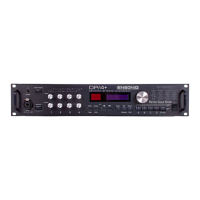Section 5 - The Vocoder
Using the Vocoder
As
you
speak
into the mike,
play
appropriate notes on the keyboard (or other controller sources)
at
the
same
time
and
listen to the results. Using a vocoder
may
require a little practice,
but
can
provide
some
rewarding
musical effects. Some common effects are
to
produce
"robot-speech"
by
talking into the mike while playing a single note,
or
to create choir
sounds
by
saying
"aah"
or
"ooh"
into
the
mike
while playing chords
on
the keyboard.
Note
that
the
pitch
of
the
output
signal is entirely determined
by
the pitch of the carrier
input,
and
is
not
affected
by
the pitch
you
sing into the microphone. The characteristics of the carrier
input
signal also affect the vocoder quality. The carrier signal
must
not
only contain sufficient
harmonics to cover
the
frequency range of the vocoder, it
must
be
played
in
a pitch range
that
roughly
corresponds
to the pitch of the microphone (vox) input. For example, it
would
be
hard
to get
good
results
if
you
are talking
in
a low pitched voice,
but
are playing
high
notes
on
the
keyboard.
Although
the
Input
1 (vox) is optimized for speech, any signal source
can
be used. The
vocoder
will
apply
the
spectrum
of any
Input
1 signal to the carrier signal, which can
produce
some
interesting timbres.
ENSONIQ DP/4 Musician's Manual 133

